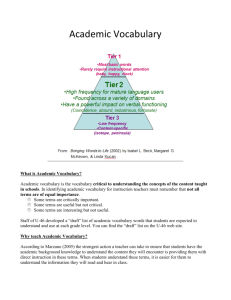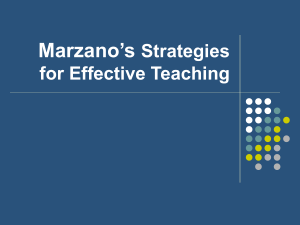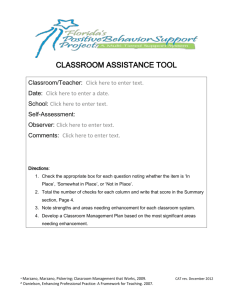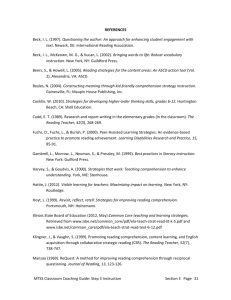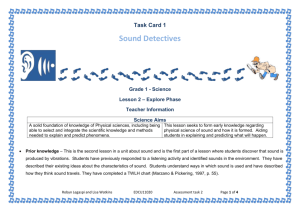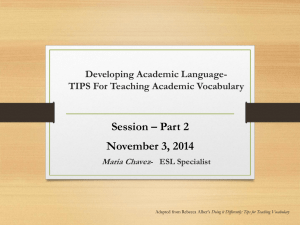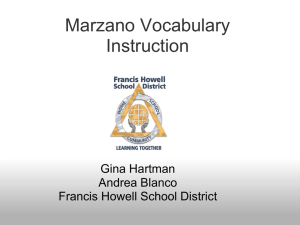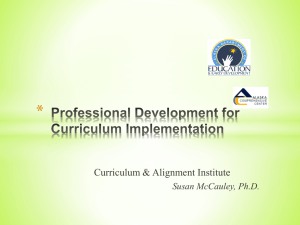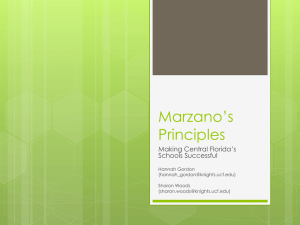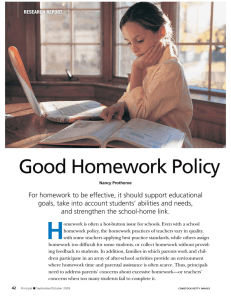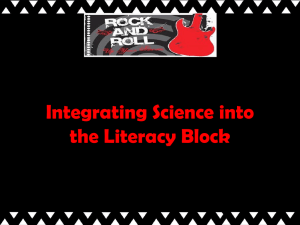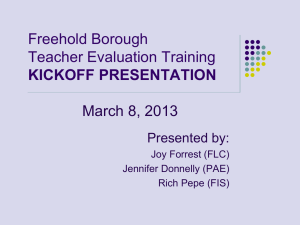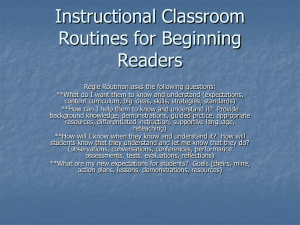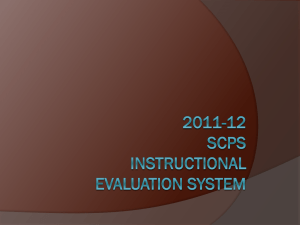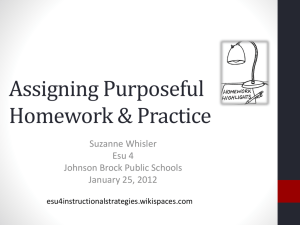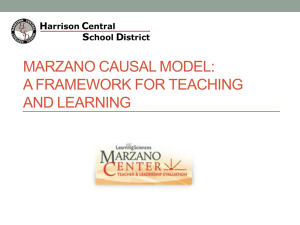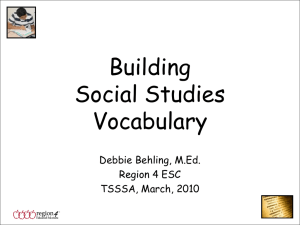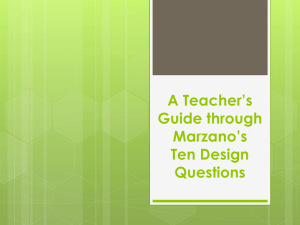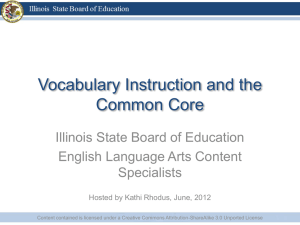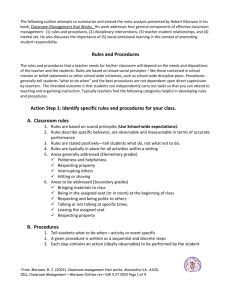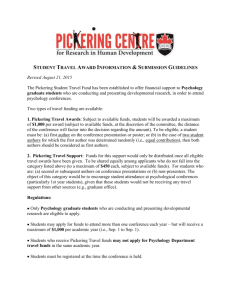Back-to-school presentation
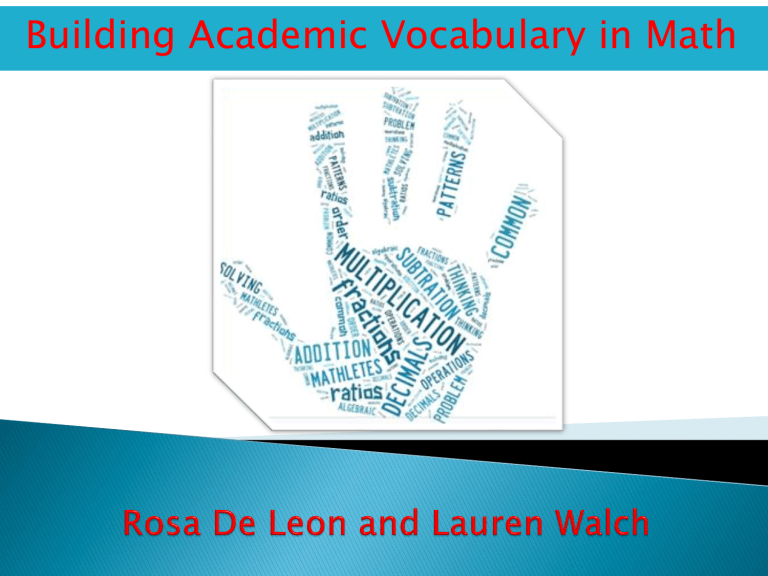
Building Academic Vocabulary in Math
Teachers will have an understanding of how to teach vocabulary within the math framework following Marzano’s six-step process.
Marzano, R. J. and Pickering, D.,
(2005).
ASCD.
Building Academic Vocabulary
Teacher’s Manual. Alexandria, VA:
“Good vocabulary instruction helps children gain ownership of words, instead of just learning words well enough to pass a test. Good vocabulary instruction provides multiple exposures through rich and varied activities to meaningful information about the word.”
(Stahl & Kapinus, 2001, p. 14)
If you are taking your students through an exploration , vocabulary instruction can take place after the exploration to cement what was learned.
If a formal lesson is used, vocabulary instruction should take place prior to instruction.
Vocabulary can also be embedded within your whole group instruction, summarizing and note taking.
Research has shown that direct and explicit instruction is an effective way for students to acquire vocabulary knowledge.
Students must encounter words in context more than once to learn them.
Instruction of new words supports learning when used in context.
(Marzano, Pickering, and Pollock, 2001, 124-127)
(Hiebert & Kamil, 2005; McKeown & Beck, 2004; Stahl & Nagy, 2006)
1. Explain
2. Restate
3. Graphical
Representation
• Together, these steps can help ensure that teachers appropriately introduce new terms and help students develop an initial understanding of them.
4. Activities
5. Discussions
6. Games
• These steps describe different types of multiple exposures that students should experience over time to help them shape and sharpen their understanding of the terms.
(Marzano and Pickering, 2005, pp. 14-15)
Ask students what they know about the term.
Build on students understanding
(Marzano and Pickering, 2005, p. 15)
It is critical that instead of simply copying what the teacher has said, the students “own” the new words by constructing their own meanings for the words.
The construction of the term does not need to be comprehensive, but efforts should be made to ensure they do not contain major errors.
Ask students to construct a picture, symbol, or graphic representation of a term; this forces them to think of the term in a totally different way.
Research shows that one of the best ways to learn a new word is to associate it with an image.
(Marzano and Pickering, 2005)
Understanding deepens over time if students continually reexamine their understanding of a given term.
Activities should be designed to engage students explicitly in the focused review of targeted items.
(Marzano and Pickering, 2005)
Interacting with other people about what we are learning deepens the understanding of everyone involved- particularly when we are learning new terms.
Although student discussions can be informal and unstructured, the teacher may want to provide a structure.
Games are one of the most underused instructional tools in education.
Many types of games can help teachers keep new terms in the forefront of students’ thinking and allow students to reexamine their understanding of terms.
It is important to set aside blocks of time each week to play games in order to energize students and guide them in the review and use of important terms.
C1(C) use strategic learning techniques such as concept mapping, drawing, memorizing, comparing, contrasting, and reviewing to acquire basic and grade-level vocabulary;
C1(E) internalize new basic and academic language by using and reusing it in meaningful ways in speaking and writing activities that build concept and language attainment;
C1(F) use accessible language and learn new and essential language in the process
Give students a permanent reference for vocabulary, allowing them to review words daily and ultimately improve their comprehension.
Teachers and students should periodically interact with word wall.
Current words should be added as they are taught .
Effort should be made to distinguish between old and new terms.
Three categories of terms:
1.
SAME: Words that have the same meaning in
“Math English” as in “Standard English.”
dollars, cents
2.
3.
ONLY MATH: Words that have meaning only in
“Math English.”
numerator, isosceles
DIFFERENT: Words that have different meanings in
“Math English” and in “Standard English.”
table, right
UCTM Annual Math Conference
2009 22
The team will pass the plate for a period of 2 minutes writing as many mathematical words that have multiple meanings.
One person will start by writing a word on the plate when time begins, then pass the marker and plate to the next person in the team.
The next team member will write a new word on the plate and pass it on.
The plate will continue to rotate among each team member until time is called.
Symbols
∆ → ↔ ∴ % ° ∩ ∪ ∈ 𝜋 𝜃 ! ││ ┴ ²
ǁ ´ ³ « » Ø ↺ ⇜
3
∗ ∠ ≠
UCTM Annual Math Conference
2009 24
Marzano’s 6-step process
Interactive Word Wall
Words with multiple meanings
Symbols in math
Marzano, R. J. and Pickering, D., (2005). Building
Academic Vocabulary Teacher’s Manual. Alexandria,
VA: ASCD.
